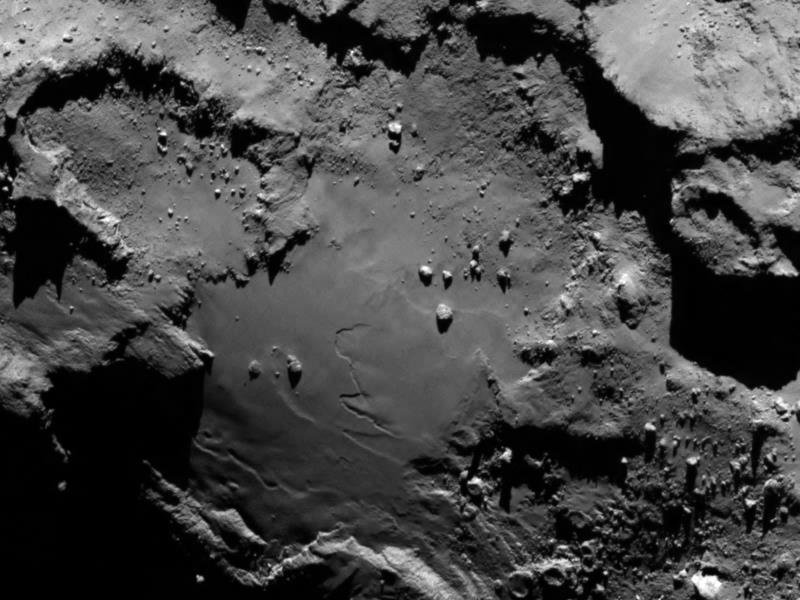LONDON, July 6 (UPI) -- Researchers say features on the surface of comet 67P are consistent with the presence of microbial life, but their assertions won't be tested any time soon.
A range of studies suggest comets served as the primary delivery system for the chemical building blocks that made life on a young Earth possible. But might comets host life themselves?
Two researchers say it's possible, and that icy black crust, flat-bottomed craters and large boulders on the surface of 67P/Churyumov-Gerasimenko -- as imaged by ESA's probe Rosetta -- are the proof.
At a recent meeting of the Royal Astronomical Society, scientists Max Wallis, from the University of Cardiff, and Chandra Wickramasinghe, director of the Buckingham Center for Astrobiology, argued the surface's features "are all consistent with a mixture of ice and organic material that consolidate under the sun's warming during the comet's orbiting in space, when active micro-organisms can be supported."
The researchers say micro-organisms can subsist at remarkably low temperatures using antifreeze salts. These organisms may become increasingly active as the comet nears the sun.
While the microbes would need liquid bodies of water to colonize the comet, the scientists say comet possesses the ice and snow that could serve as microbial habitat as it regularly sublimates.
"Rosetta has already shown that the comet is not to be seen as a deep-frozen inactive body, but supports geological processes and could be more hospitable to micro-life than our Arctic and Antarctic regions," Wallis said in a press release.
In addition to the appearance of the comet's icy structures, researchers say its dark surface is one of the most conspicuous characteristics.
"These are not easily explained in terms of prebiotic chemistry," Wickramasinghe told the Guardian. "The dark material is being constantly replenished as it is boiled off by heat from the sun. Something must be doing that at a fairly prolific rate."
As Popular Mechanics journalist Eric Limer points out, all this speculation comes from a speech, not a peer-reviewed paper. And because Rosetta's lander Philae (still lost) doesn't have the ability to test for life, the scientists' assertions can't be verifiably tested.
"The best one can do is guess at whether the heart of Philaes comet is full of alien extremophiles," Limer writes. "Maaaaaaybe it is! But then again maybe it's not!"
"It's that core uncertainty that's at the heart of many of these types of claims about extraterrestrial life," Limer adds. "While they have often not been proven false, they are far from being proven true."















